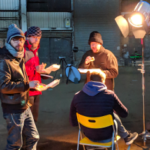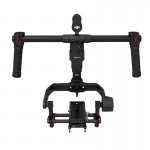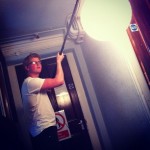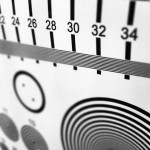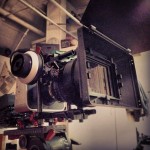The first time I ever saw a Chinaball on a set was whilst watching the extra features on the Indiana Jones and the Crystal Skull DVD. I’ve found that exact moment on youtube, here it is: behind the scenes It’s just a tiny glimpse, but ever since then it’s been sitting in the back of my mind. If you need to light people moving about in a huge room, but don’t have massive fresnels and gridcloth to get a nice soft key light — put a small light on a boom just out of shot and follow them! It was a eureka moment.
That was a few years ago now, and I never really had the right project for nice soft warm lighting. Then the 48 hour film project came to Glasgow and I thought it’d be the perfect time. Because of the extreme time restrictions I thought the quick setup and general versatility of a light on a boom pole would be perfect. So I went out to the hardware store and built one.
Here’s what you’ll need:
- Telescopic Painters Pole £10
- Mains Plug and Switch £5
- Cord Grip Pendant B22 socket £2
- B22 light bulb 70W halogen globe £4
- Paper Lampshade £4
Total £25
Painters poles are everywhere, just try B&Q or a local hardware store. Mains plug and switch can be found on any cheap desk lamp. Unplug it, and then cut the cable off, leaving as much length as possible and make sure you cut on the lamp side of the switch, so we can still use it. You can probably buy a cable with switch in a hardware store too, but I had a spare one anyway. Cord Grip and bulb, same story, hardware store. The paper lamp I would recommend is from John Lewis, they have a fairly decent quality one. B&Q’s was rubbish.
The other option if you need a bigger softer shade which allows for brighter bulbs (250W max) is a fancy filmmaking chinaball from Filmtools. This brings me to a disclaimer: the bulb I have recommended is slightly over the maximum for the shade I have recommended. It will go on fire and kill everyone if left unattended. I therefore suggest you either buy a higher rated shade or use a bulb which is within the manufacturer’s recommended wattage and never leave any chinaball unattended.
To put it together it’s a case of stripping the mains cable down to wires at one end (get a youtube electrician to show you if that doesn’t make sense) and screwing them into the cord grip; popping the paper shade onto the cord grip; plugging the light bulb; gaffa taping the cord to the end of the painters pole; plugging it in! I chose to spray paint the pole black as this can help reduce any shiny moments and also makes it look less like a bodge and more like a professional setup.
Right, so on to some examples of how I used it during the 48 hour film project.
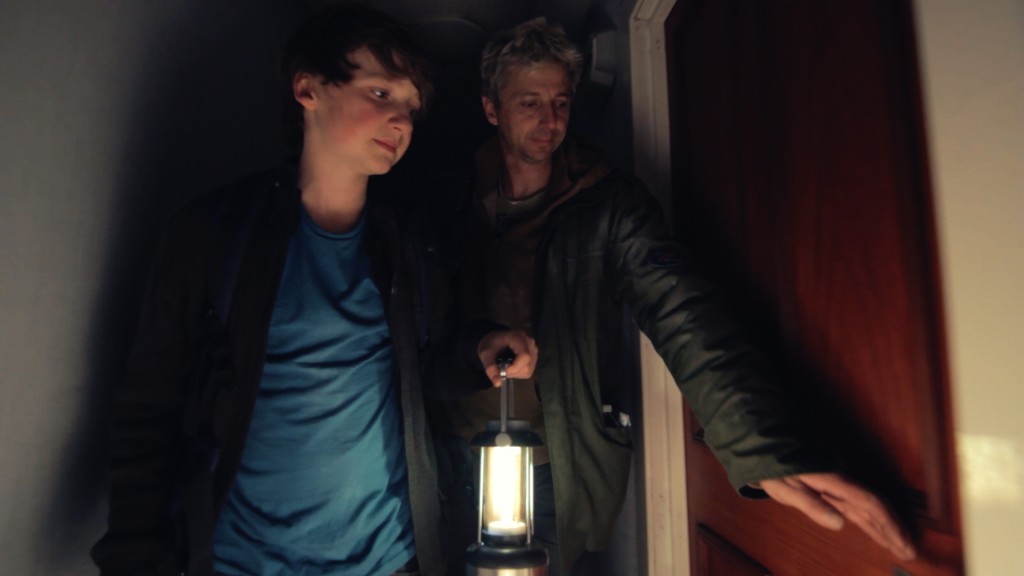
In this first shot, Murdo’s character is holding a lantern which is supposedly lighting the whole shot. In reality this lantern is a cheap battery powered flo lamp with a bit of CT orange filter wrapped round it to make it look warmer than it is. There is no way we could light a shot with the pitiful trickle of light that comes out of it. Enter the chinaball, placed just out of shot beneath the camera resting on the dolly between my legs with Stephen booming it, Andrew gripping the cable, and Matt gipping the dolly. With it’s power, I could expose the shot correctly without ruining the illusion that the corridor is dark and being lit entirely by the lantern.
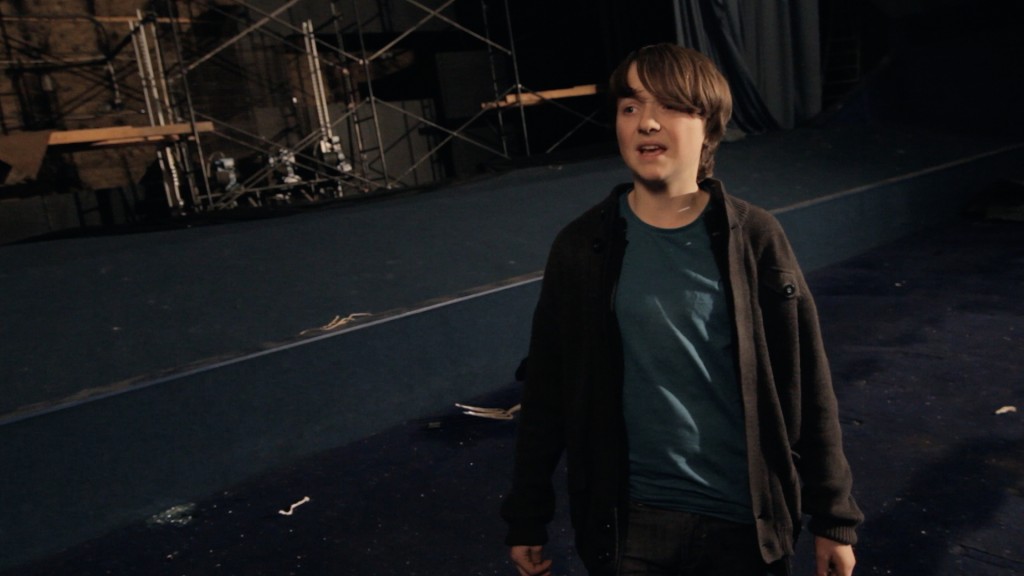
This next shot is an example of using the chinball as a fill light rather than a key as before. In this case the key light is coming from two 2k fixtures, one bounced off a white ceiling and the other directly at Murdo, keying the whole room. The chinaball is used over the camera here to ensure there is a sparkle in Murdo’s eyes and nice warm exposure on his face reducing the contrast and giving a soft wrap around. You can see how dark his face would have been by looking just under his chin, where the chinaball creates a shadow.
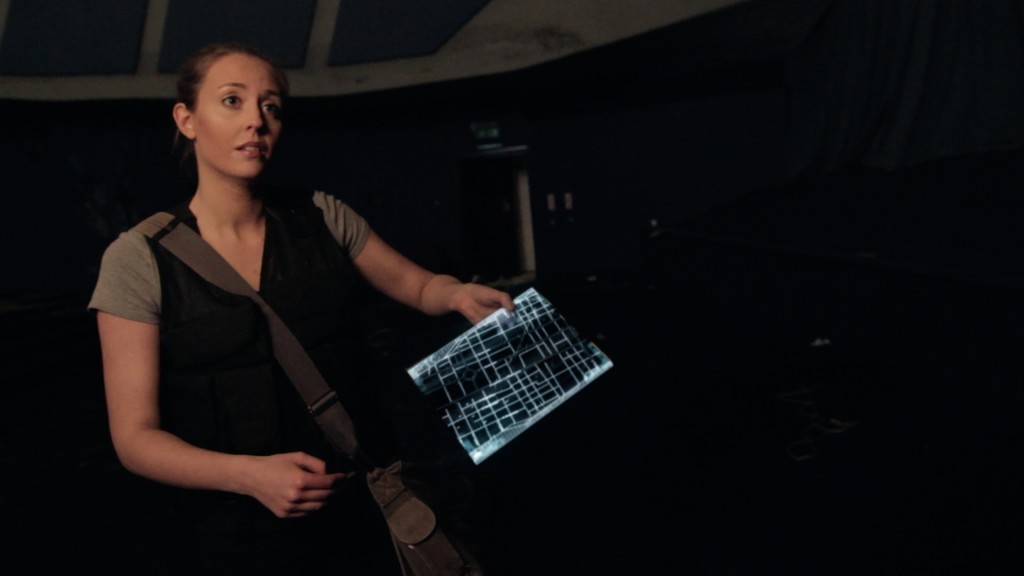
In this final example, the chinaball is once again being used as a keylight. The 2k fixtures lighting the room were making the background too bright for my liking, and so we turned them both to bounce on the ceiling to give a tiny bit of fill to the background, the chinaball was just over camera giving Laura a lovely sparkle in her eyes and ensuring the direction of light was maintained from the master as to not confuse her position. Soft warm light like this also makes for very flattering light, so actors love it!
Now there’s no excuse, go make one! It saved us so much time and brought me a great amount of control over the lighting, making adjustments to fresnels take time and is difficult when they’re hot, whereas with the chinaball it was a case of telling Madeleine (2nd AC) to move a bit to the left. Couldn’t recommend it enough.
Time for some self plugging: We are available to hire as film crew across the country, so if you like what you see and would like to consider a professional crew for your next film, please don’t hesitate to contact us.


